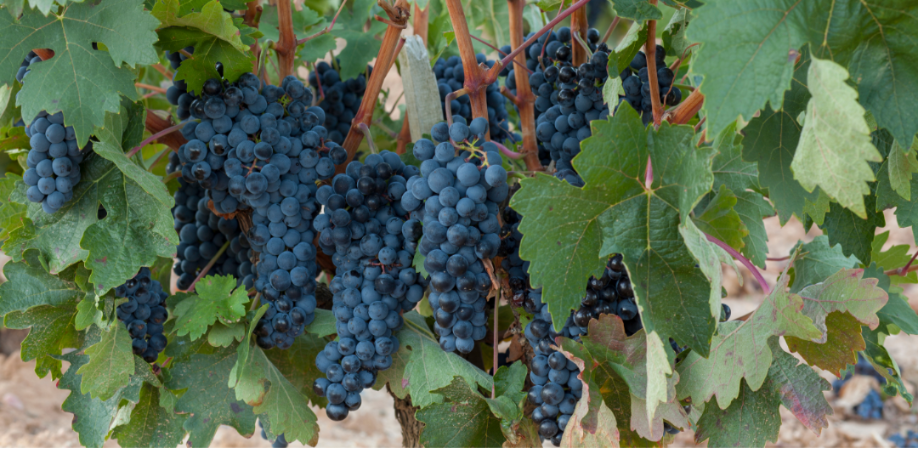All You Need To Know About Tempranillo
All You Need To Know About Tempranillo
Tempranillo is Spain’s most prized and most popular black grape variety. It gets its name from the Spanish word temprano, which means “early,” due to its tendency to ripen earlier than other grapes that are native to Spain. Not just Spain though, Tempranillo is produced in Portugal as well and here it goes by the names Tinta Roriz and Aragonéz.
Characteristics
Wine made from Tempranillo typically has medium acidity, medium levels of tannins, medium body and medium alcohol. It has red fruit flavours such as strawberry, raspberry and red cherry and black fruit flavours of black plum. Since it is a middle-of-the-road wine, Tempranillo is perfect for blending with other grape varieties. But it is also a standout variety on its own.
As a young wine, Tempranillo is fresh, simple and fruit-forward, but with oak maturation, the wine gains complex notes of leather, smoke and mushrooms.Here’s Why Wine And Food Pairing Classes Are Important
Winemaking
This versatile grape makes a range of dry red wines- from simple, fruity and inexpensive to ripe, complex and age-worthy wines. Other grape varieties may be blended into it to increase acidity and tannins. Thus, such a wine has a good long-term ageing potential.
It is a tradition in Spain to mature Tempranillo wines in small new oak barrels. The oak imparts complex secondary flavours such as vanilla, smoke and cedar into the wines as well as softens tannins and gives it a fuller body. Wine is also aged in bottles and over time it gains complex tertiary flavours of dried fruit, caramel and toast.

Spain
Tempranillo is Spain’s top red wine. It is typically labelled by its regional names. Catalunya DO (Denominación de Origin) produces high volumes of Tempranillo and Tempranillo-based blends. These wines are simple in expression and fruit-forward.
The most famous Tempranillo wines come from the Rioja DOCa (Denominación de Origen Calificada) region. Wines made here are more powerful and concentrated in expression. Winemakers here blend Tempranillo with other wine grape varieties like Graciano, Grenache and Mazuelo (also known as Carignan).
Tempranillo is also found in other Spanish regions like Ribera del Duero, La Mancha and Ribera del Guadiana.
Since ageing plays a huge role in changing the expressions of red wines, Spain has a classification to determine how long a wine has been matured- in oak, bottle, or both. You’ll see the following terms on your Tempranillo bottles as well:
Joven – The word “Joven” means young. A wine with this label has spent little to no time in oak and has been released in the year of vintage. Such wines are young, fresh and fruity, and must be consumed within a year.
Crianza – Wines that have been oak aged for at least 12 months. These wines are a bit more complex and intense in flavour.
Reserva – Wines with 12 months of oak ageing with up to two years of bottle ageing. Reserva wines will have a lot of complex secondary and tertiary aromas like dried fruit, caramel and toastiness.
Gran Reserva – Wines that have been oak aged for 18-24 months, with an overall ageing of five years. This long duration of maturation gives the wine significant tertiary aromas. The wine significantly moves from the fresh fruit spectrum to that of dried fruits like prunes and figs. These wines are sometimes paler in colour and have very concentrated flavours. Winemakers lock a lot of capital to age these wines, thus they are very expensive and of top quality.

Service
Serving temperature – 15 to 18 degrees Celsius
Glass type – Standard red wine glass
Decanting – Ideal decanting time for a young Tempranillo is 30 minutes. For an aged Tempranillo it is around two hours. The Reserva and Gran Reserva wines should ideally be decanted for a longer period of time.
Food Pairing
Tempranillo pairs well with all types of food because of its savoury qualities. Regional Spanish cuisine, which includes roasted vegetables and cured meats, is a perfect match for this wine. However, the wine is incredibly diverse and works well with different kinds of global preparations. For instance, Italian dishes with tomato-based sauces such as lasagna, pizza or pasta can work really well with Tempranillo. So will Mexican food such as tacos, nachos or burritos. In Indian cuisine, you can opt for all kinds of lentils and kormas. Another good option is barbecue grilled meats and smoky dishes.
